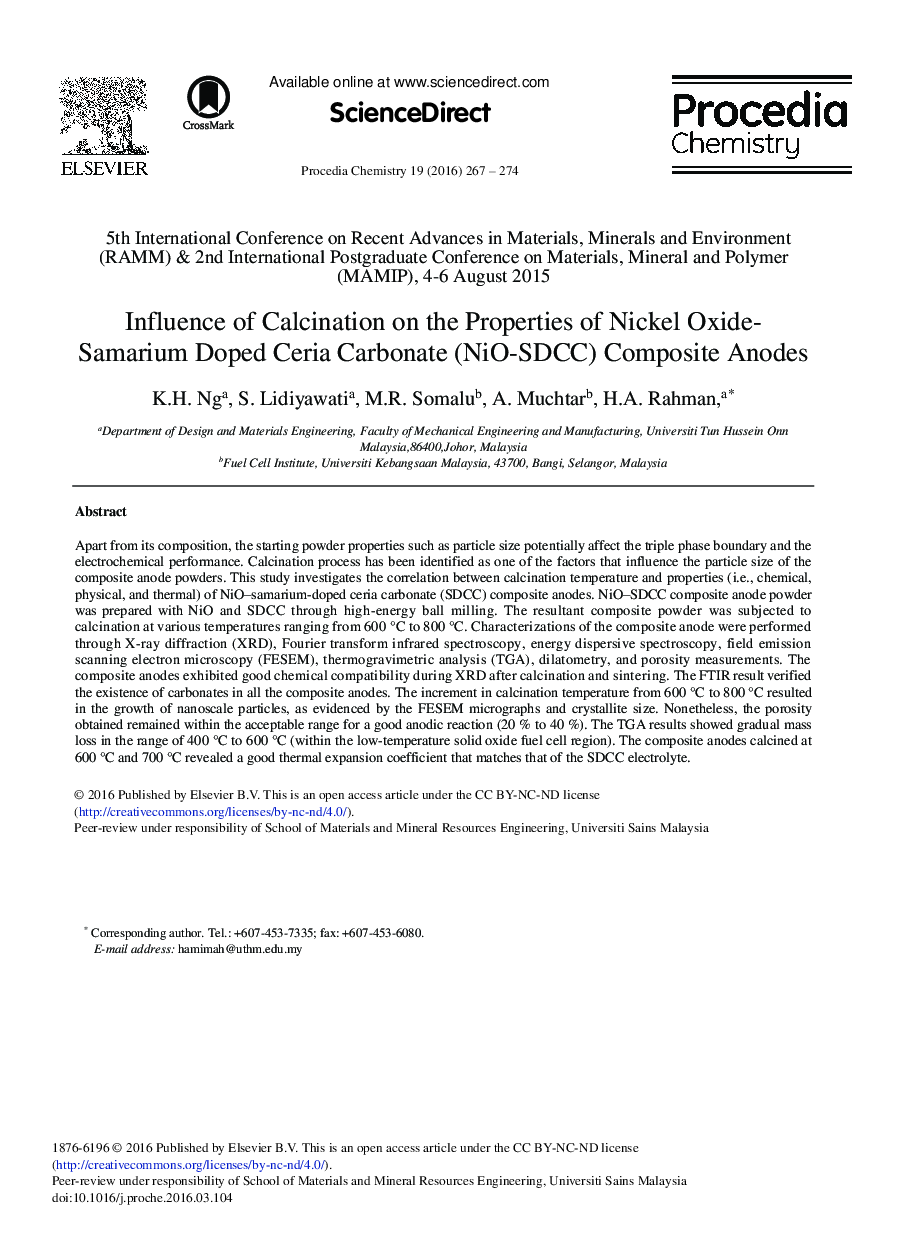| کد مقاله | کد نشریه | سال انتشار | مقاله انگلیسی | نسخه تمام متن |
|---|---|---|---|---|
| 239824 | 466232 | 2016 | 8 صفحه PDF | دانلود رایگان |
Apart from its composition, the starting powder properties such as particle size potentially affect the triple phase boundary and the electrochemical performance. Calcination process has been identified as one of the factors that influence the particle size of the composite anode powders. This study investigates the correlation between calcination temperature and properties (i.e., chemical, physical, and thermal) of NiO–samarium-doped ceria carbonate (SDCC) composite anodes. NiO–SDCC composite anode powder was prepared with NiO and SDCC through high-energy ball milling. The resultant composite powder was subjected to calcination at various temperatures ranging from 600 °C to 800 °C. Characterizations of the composite anode were performed through X-ray diffraction (XRD), Fourier transform infrared spectroscopy, energy dispersive spectroscopy, field emission scanning electron microscopy (FESEM), thermogravimetric analysis (TGA), dilatometry, and porosity measurements. The composite anodes exhibited good chemical compatibility during XRD after calcination and sintering. The FTIR result verified the existence of carbonates in all the composite anodes. The increment in calcination temperature from 600 °C to 800 °C resulted in the growth of nanoscale particles, as evidenced by the FESEM micrographs and crystallite size. Nonetheless, the porosity obtained remained within the acceptable range for a good anodic reaction (20% to 40%). The TGA results showed gradual mass loss in the range of 400 °C to 600 °C (within the low-temperature solid oxide fuel cell region). The composite anodes calcined at 600 °C and 700 °C revealed a good thermal expansion coefficient that matches that of the SDCC electrolyte.
Journal: Procedia Chemistry - Volume 19, 2016, Pages 267-274
